UVC light is part of the electromagnetic spectrum that spans 100-400nm. It is divided into 3 types UVA, UVB and UVC. UVC which is an invisible light spanning the range of 100-280nm and has powerful germicidal properties so UVC light use as disinfectant for water, surface, air etc. Ultra Violet disinfection usually involves a UV lamp. The UV lamp is used to provide pure and safe drinking water. The UV light used in this process is a high powered UV termed as UV-C or germicidal UV.
UVC rays have the shortest wavelength, and therefore highest energy, they are capable of killing bacteria and viruses, also called pathogens. Water is disinfected as it runs through a stainless steel chamber containing a UV lamp. As water flows past the lamp, illness-causing microorganisms receive a lethal dose of UV light that attacks their DNA and eliminates their ability to reproduce. Harmful bacteria and viruses are deactivated, and your family is safe.
Under no circumstances should you stare at a UV-C light source for any amount of time. When UV-C light shines on water or if the bulb is immersed in the water, some of the light penetrates the water and is absorbed by germs, such as bacteria and viruses, in the water. The average bacterium will be killed in ten seconds at a distance of six inches from the lamp in an American Ultraviolet Germicidal Fixture.
UV light can have efficient inactivation of bacteria up to a distance of eight feet on either side and exposure time of 30 minutes is adequate. The medical profession was the first to endorse the germicidal effect of UV lamps and it has been used traditionally to disinfect operation theaters.
Objectives: 1) To design cartridge to remove insoluble impurities 2)To make affordable, portable, low cost and replicable water filter system to get drinkable water. It will work on solar power if any electric power requires.
Calculate the retention time of UV i) Calculate the retention time of UV tubes UV dosage= intensity of UV tube ✕ exposure time 16000 = 1100 ✕ t t= 16000/1100 = 14.54 sec
ii) By experiment we get result for 200ml water 30sec
First trial: Take 250ml tap water and fill in the UV chamber and give 30sec AC supply to the UV tube. Take H2S test of this water.
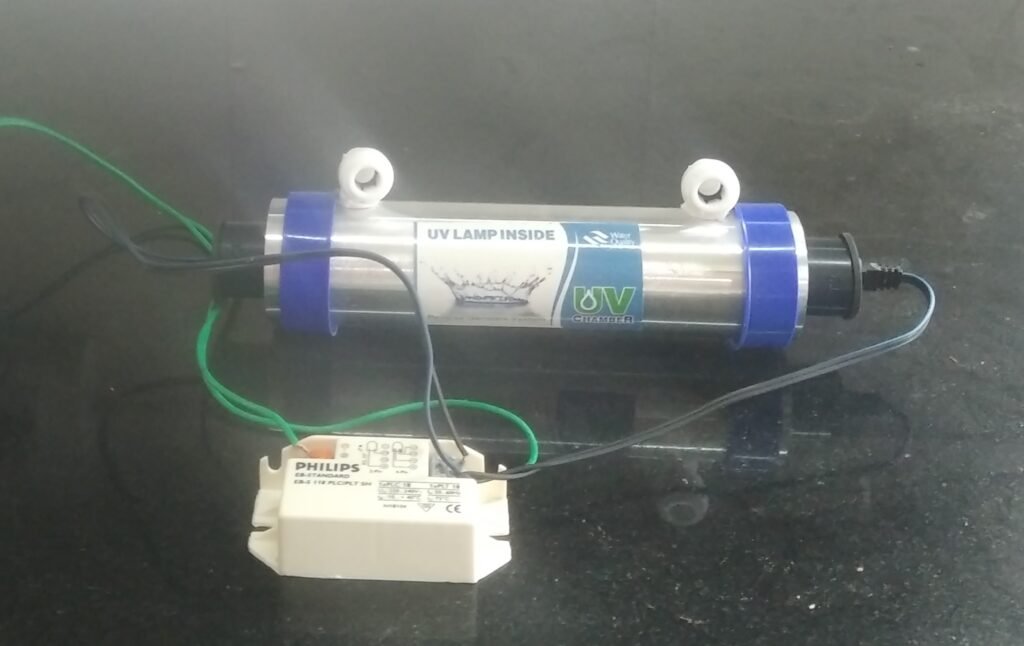
Second trial: Take water in one pot of 2 liter gives 10 min direct UV exposure on surface of water. Take H2S test of these water it is negative. But The average bacterium will be killed in ten seconds at a distance of six inches from the lamp in an American Ultraviolet Germicidal Fixture. So I take one pot of height 15cm and fill water in it and give 3 min, 5min UV treatment on the surface of water. take H2S test and it is negative.
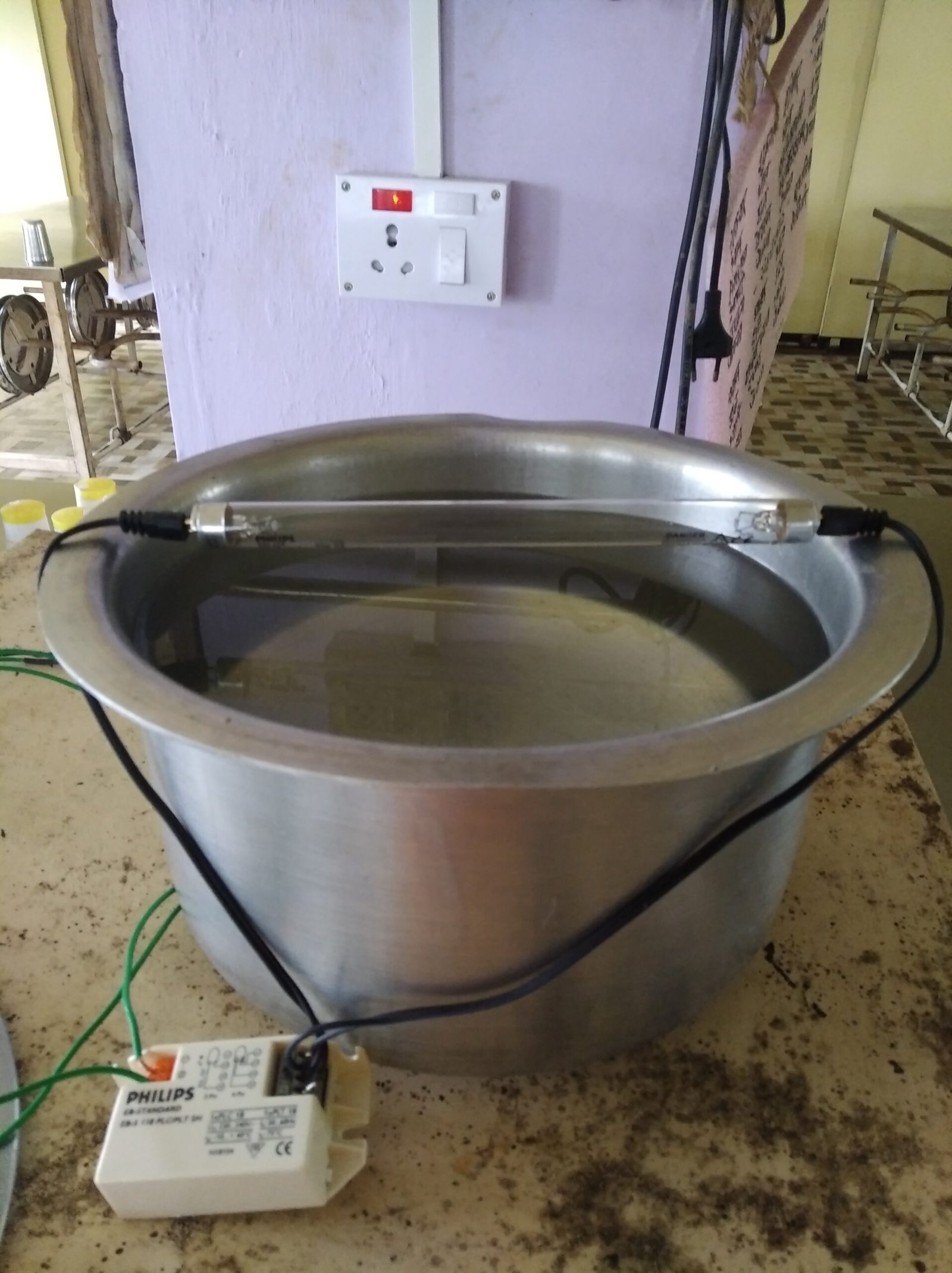
Prototype of the UV water filter Step 1: Take 25 liter pot fix 6V, 220mA submersible pump inside the container and one end cap which fit on the top of the container of water.
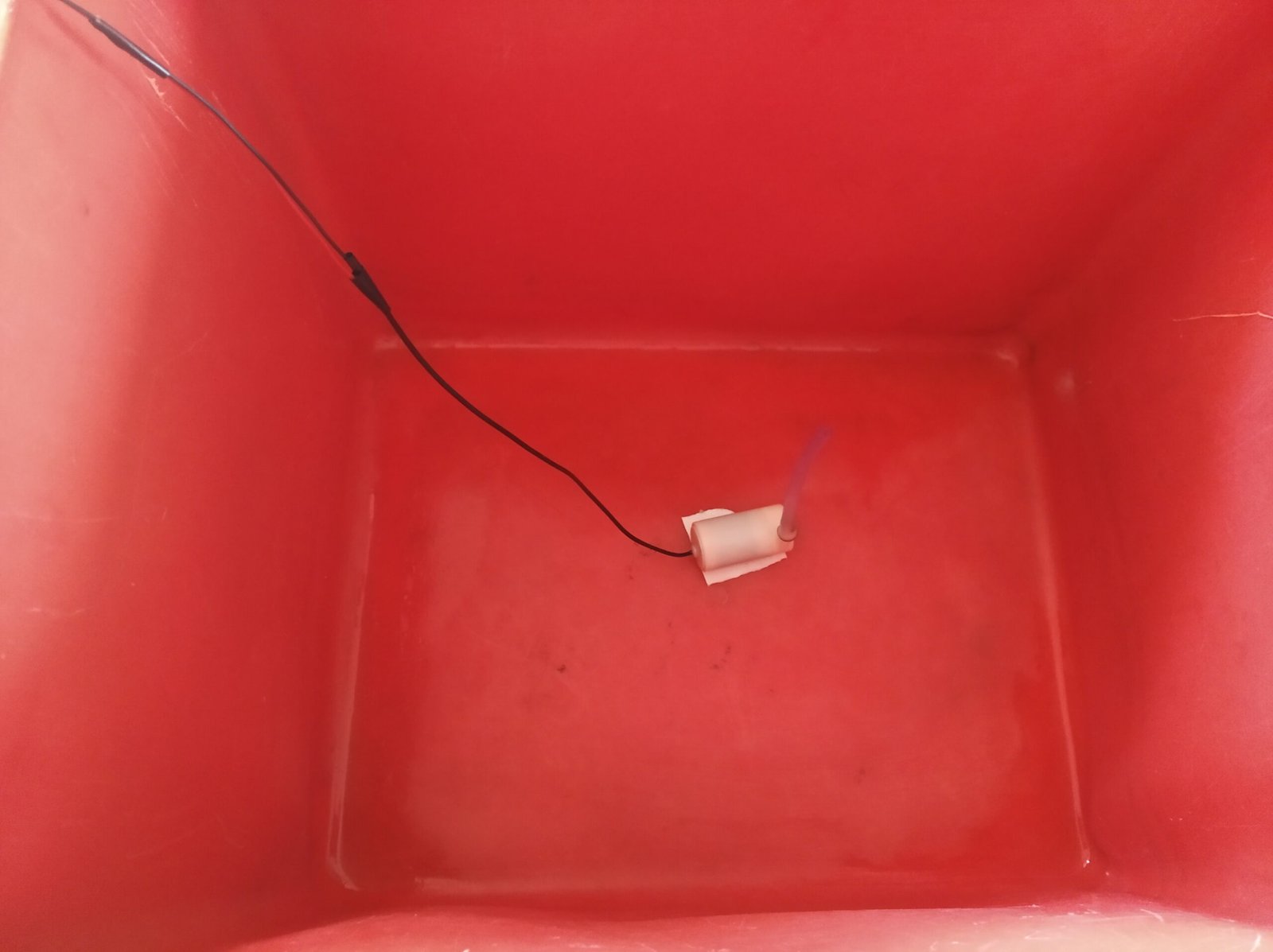
Step2: Design a frame in Solid works for UV tube connection and fit on the top of the end cap. Make connections of the UV tube.

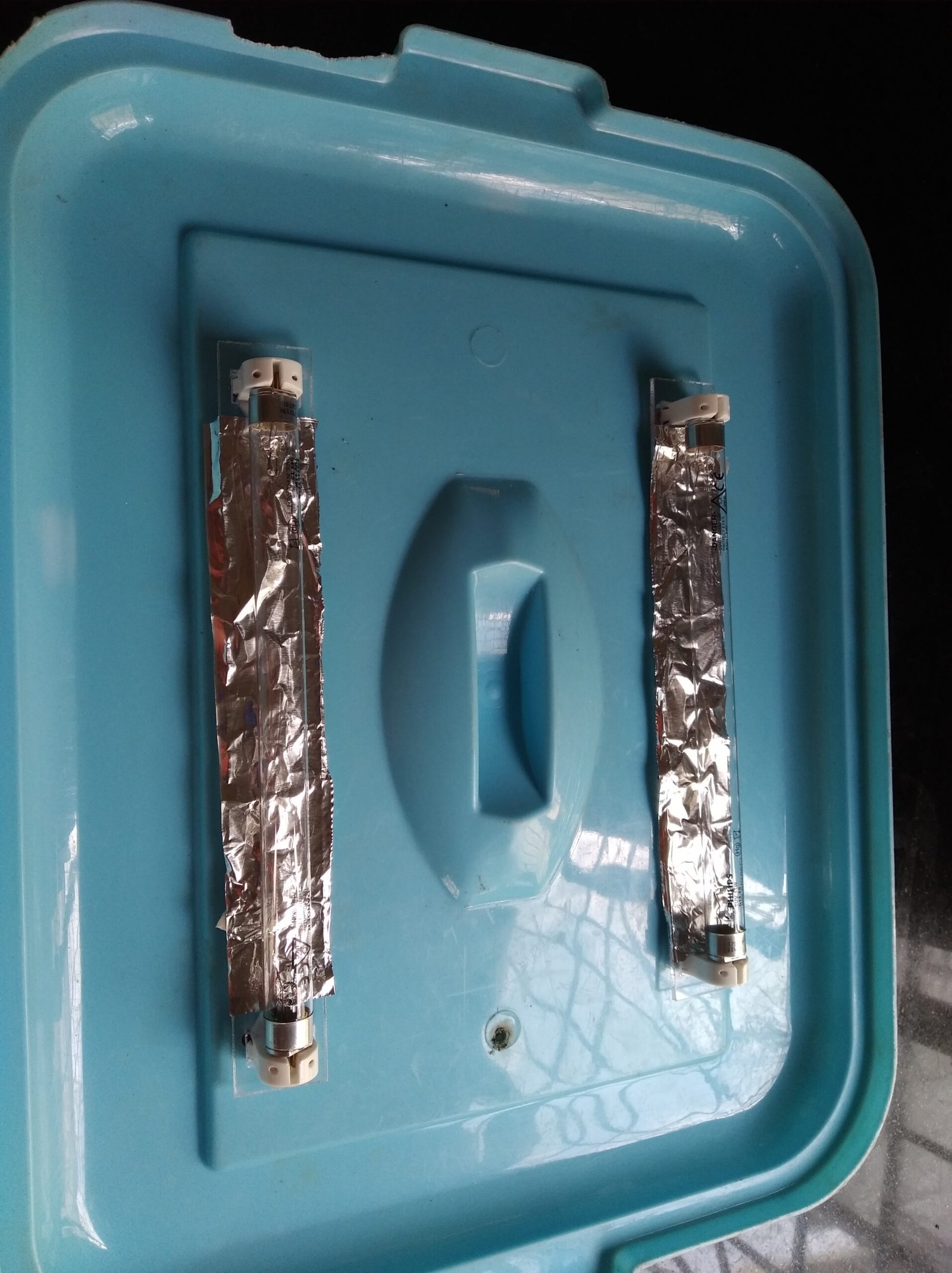

Step 3: take 25liter water in the container and 12 min, 15min, 20min, 25min direct UV exposure on the surface of water. Take H2S test and all tests are negative. For the prototype I used plastic pot but I can not use it for final product because When absorbed by plastics, UV energy can excite photons. This, in turn, can create free radicals. Then, before you know it, degradation occurs, as catalyst residues will often act as receptors. The fact is, lots of pure plastics simply cannot absorb UV radiation, putting your project and its components at severe risk.
Step 4: So we used stainless steel material for this filter.
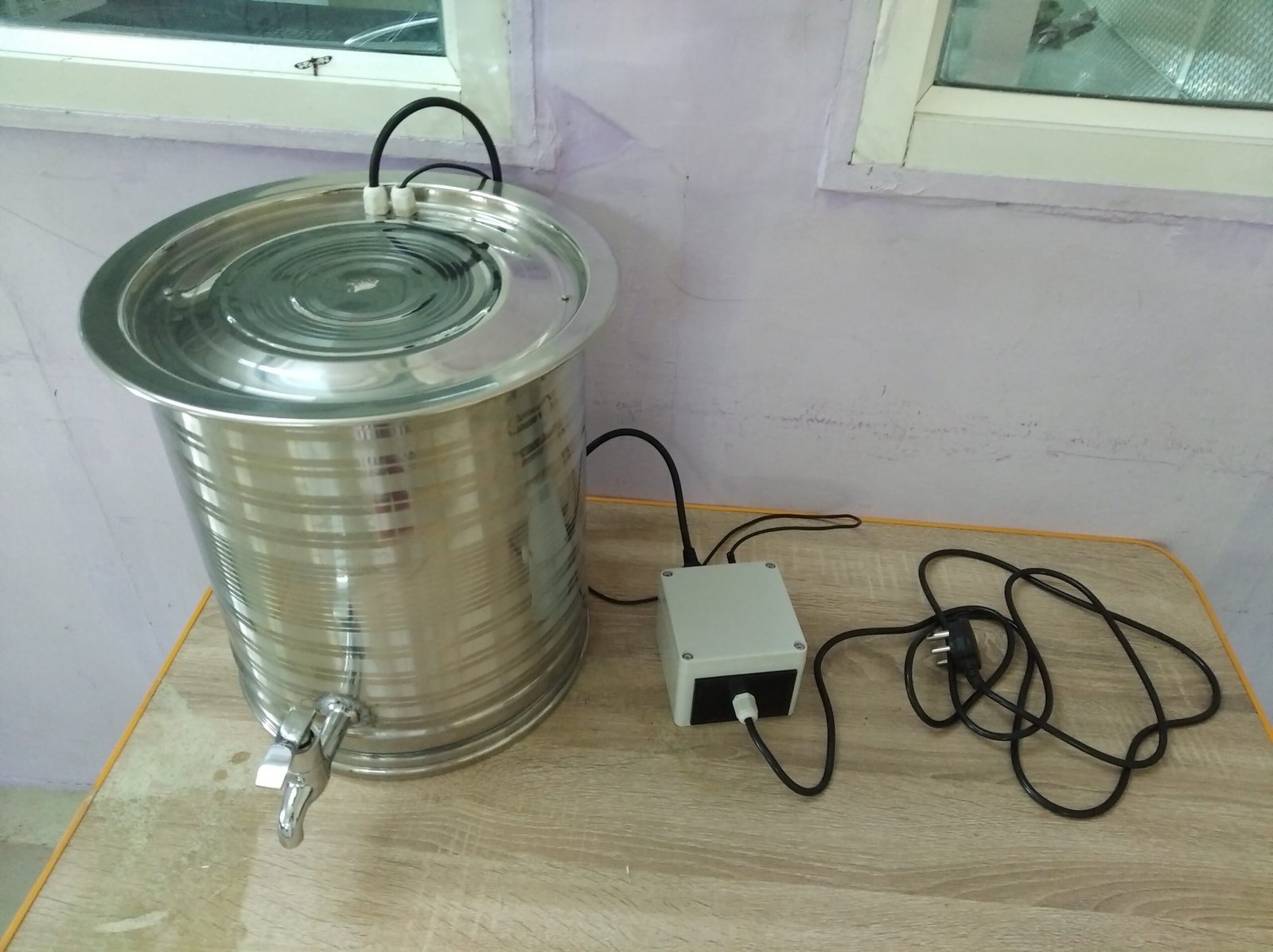
List of material for the prototype
| Sr. No. | Material | Quantity | Rate |
| 1 | 15L container | 1 | 950 |
| 2 | UV tube | 1 | 170 |
| 3 | UV frame | 1 | 413 |
| 4 | Submersible pump | 1 | 189 |
| 5 | Junction box | 1 | 120 |
| 6 | Male- female connectors (AC supply) | 1 | 30 |
| 7 | Male- female connectors (DC supply) | 1 | 20 |
| 8 | Cable gland | 2 | 30 |
| 9 | Vacuum buds | 2 | 50 |
| 10 | LED 5W driver circuit | 1 | 70 |
| 11 | Wires | 3m | 100 |
| 12 | Screws | 6 | 50 |
| Total Cost | 2162 |
Reference:
1)https://sswm.info/sites/default/files/reference_attachments/INTERNATIONAL%20WATERGUARD%202002.%20Disinfection%20of%20water%20by%20ultraviolet%20light.pdf 2)http://www.stoptb.org/wg/ett/assets/documents/Simple%20Method%20for%20Measuring%20UV%20Emission%20Rate%2010-17-15.pdf 3)https://www.researchgate.net/post/How_can_we_calculate_UV_light_intensity 4)https://www.americanultraviolet.com/uv-germicidal-solutions/why-uvc-germicidal.cfml#g 5)https://www.essentracomponents.com/en-us/news/product-resources/uv-and-its-effect-on-plastics-an-overview#:~:text=When%20absorbed%20by%20plastics%2C%20UV,its%20components%20at%20severe%20risk. 6)https://www.freshwatersystems.com/blogs/blog/what-is-a-uv-water-purifier-and-how-does-it-work 7)https://www.freedrinkingwater.com/whole-house/water-filter-knowledge-base/how-does-ultraviolet-water-purification-work.htm
8)PC DWQuality:http://inremfoundation.org/fluorosis/pdf/T1p10.pdf
9) https://www.sciencedirect.com/science/article/pii/S2214581814000469
10) https://en.wikipedia.org/wiki/Solar_water_disinfection





